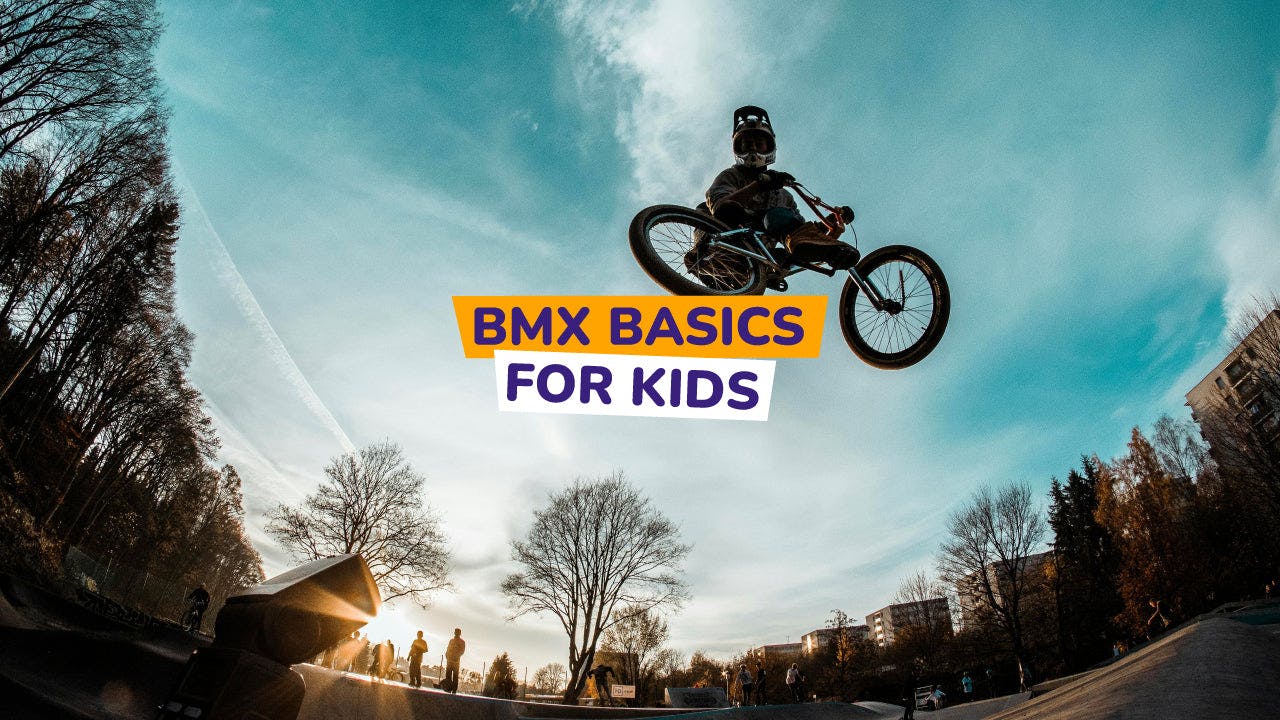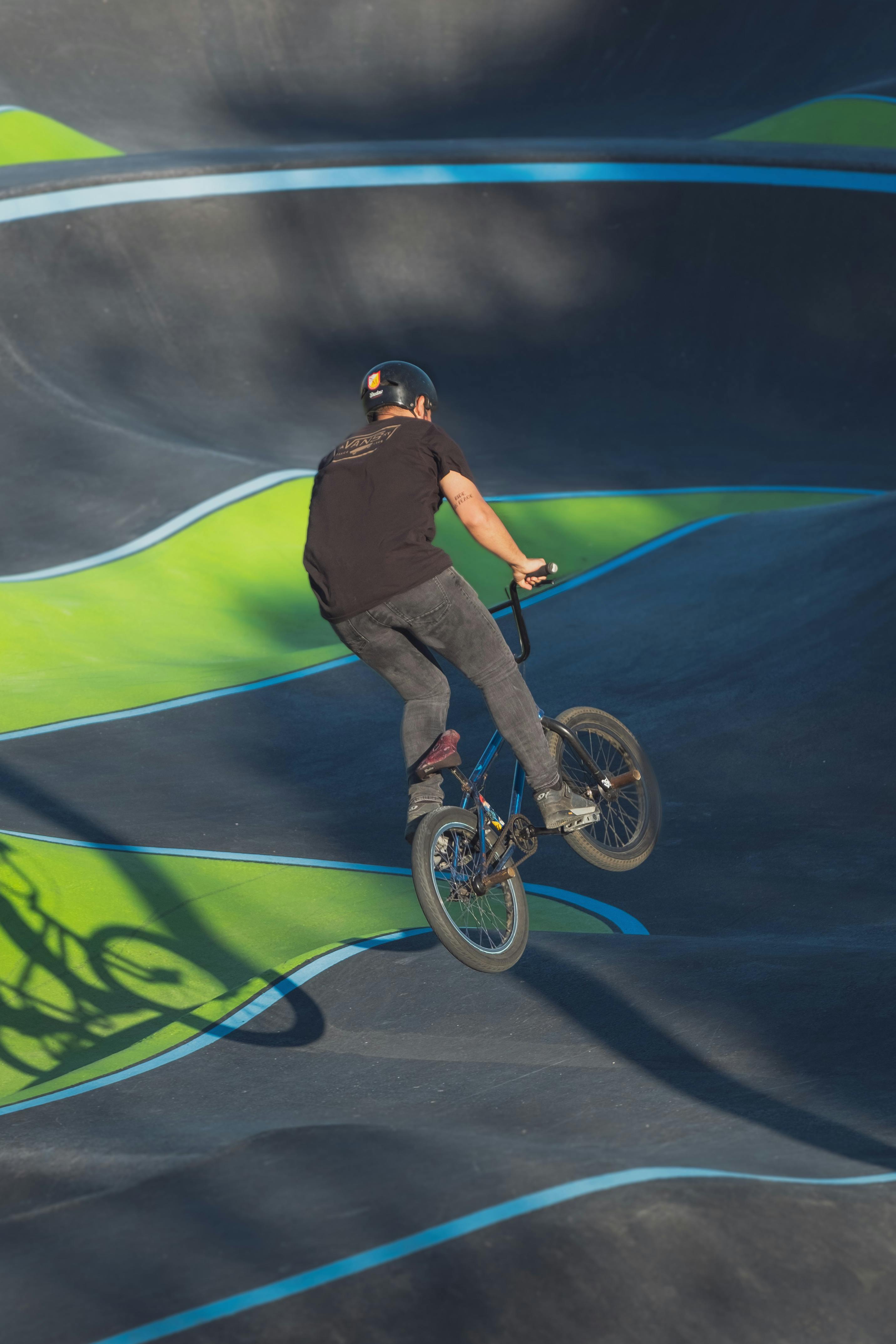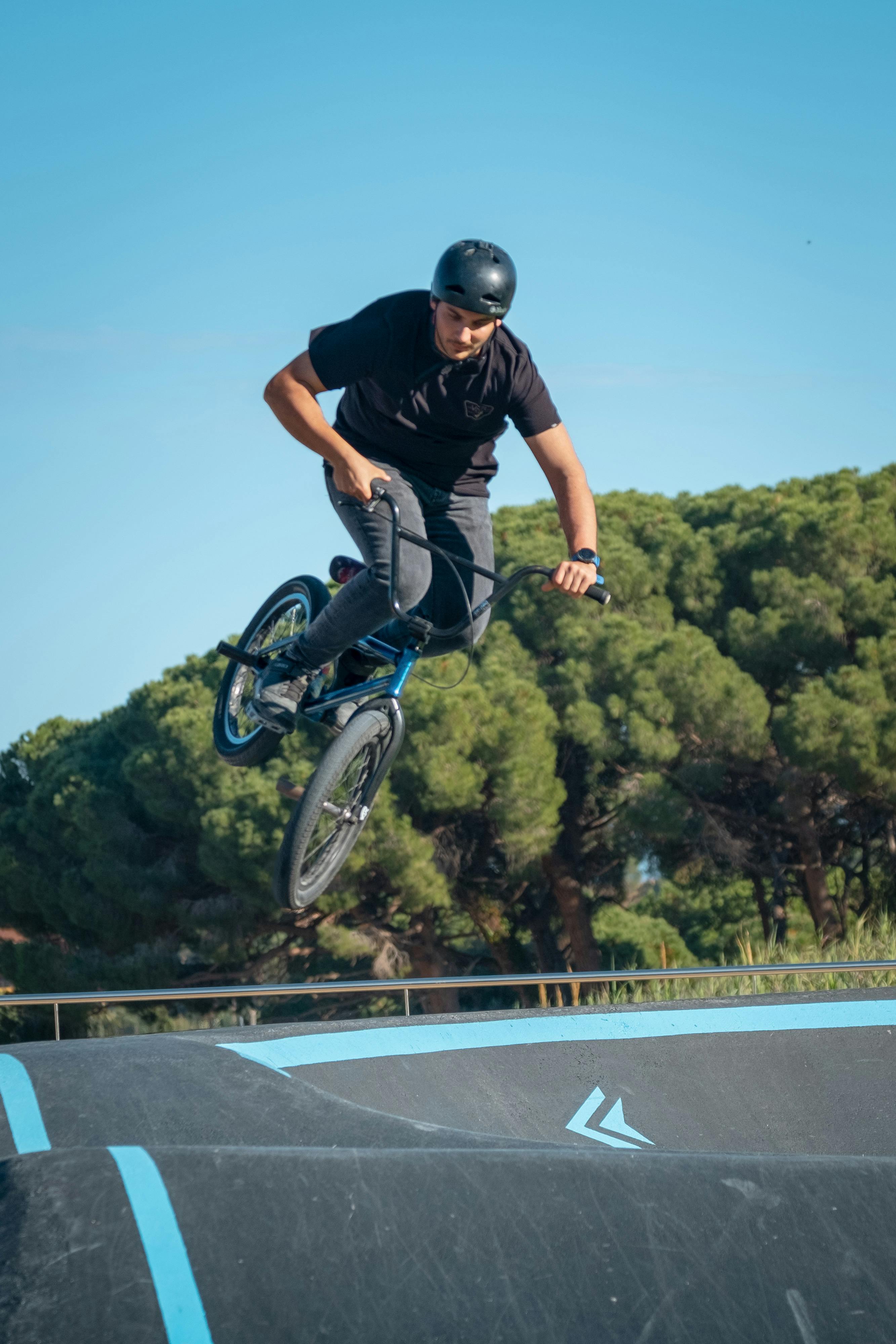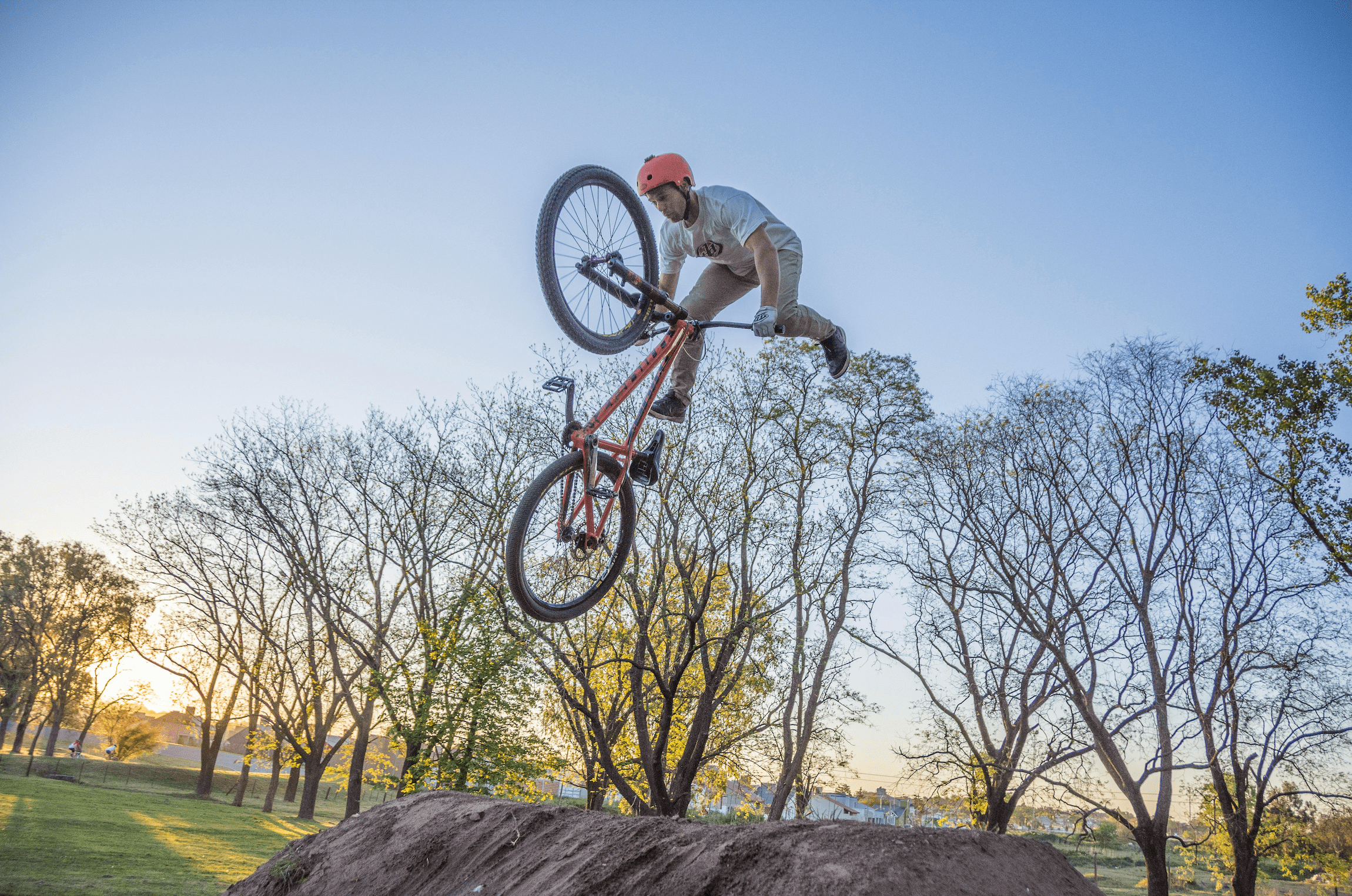
BMX Basics for Kids
Are you or your child interested in learning the fundamentals of BMX? This guide provides an introduction to the sport, covering essential techniques and basic tricks suitable for beginners.
Whether you're looking for a new challenge or simply want to improve your bike handling skills, BMX offers an exciting and rewarding activity. This guide equips you with the knowledge needed to safely and effectively start your BMX journey.
Beginner BMX Bikes
Choosing a quality bike that fits well is crucial for a safe BMX experience. Look for a sturdy, well-made BMX specifically designed for your child's height and age. These bikes typically feature smaller wheels (usually 20 inches or less) and a robust frame to handle the demands of BMX riding.
Here at Bike Club, we offer a range of beginner-friendly BMX bikes:
- Wethepeople Riot 14: This 14-inch BMX is ideal for young riders starting out, offering a comfortable fit and durable construction.
- Wethepeople Seed 16: This 16-inch option provides a good step-up for slightly older or taller beginners, offering increased stability and manoeuvrability.
- Wethepeople Thrillseeker Series (S, M, L): This series comes in three sizes (Small, Medium, Large) to cater to a wider range of riders, ensuring a proper fit for optimal control and confidence.

Local BMX Parks
Once you've got your wheels, it’s time to find somewhere to practice. Many communities offer dedicated BMX tracks or pump tracks designed for practising and perfecting your moves in a safe and controlled environment. These parks often cater to different skill levels, allowing you to progress at your own pace.
To find your local BMX park, you can search online using resources like BMX Track Directory. This website allows you to search by location and filter results by features, amenities, and even user ratings. Additionally, local bike shops and community centres can often provide information on nearby BMX parks.

Basic BMX Techniques
Mastering these fundamental techniques will lay the foundation for your BMX journey. Remember, safety is paramount, so wear proper protective gear and practice in a safe environment before attempting anything new.
Riding Position
-
Explanation: A proper riding position provides stability, and control, and allows you to react quickly.
-
How-to: Stand with your feet shoulder-width apart on the pedals, knees slightly bent, and core engaged. Keep your back straight but not rigid, and your arms slightly bent with elbows close to your body. Look ahead, not down at the ground.
Pedalling
-
Explanation: Efficient pedalling is crucial for maintaining speed and momentum.
-
How-to: Push down on the pedals with the balls of your feet, alternating left and right in a smooth, circular motion. Maintain a steady pedalling rhythm and focus on using your leg muscles, not just your feet.
Braking
-
Explanation: While BMX bikes typically only have one brake (rear wheel), knowing how to control your speed effectively is still crucial for safety.
-
How-to: Apply the rear brake lever with controlled pressure to slow down. Avoid grabbing the lever abruptly, which can lock up the wheel and cause a skid. As you brake, shift your weight slightly back over the rear wheel for better control.
Cornering
-
Explanation: Learn how to lean your body and bike into turns to maintain control and avoid skidding.
-
How-to: As you approach a corner, slow down slightly and shift your weight slightly towards the inside of the turn. Lean the bike into the corner by tilting your body and handlebars in the same direction. Maintain a smooth, controlled lean throughout the turn.
Dropping In
-
Explanation: Dropping in refers to riding down an incline, such as a ramp or starting point on a pump track.
-
How-to: Start on a gentle incline first. Begin by rolling down the incline with moderate speed and maintain a balanced riding position. As you gain confidence, you can gradually increase the incline and practice maintaining control while dropping in. Remember, always progress slowly.

Basic BMX Tricks for Kids
Bunny Hop
- Explanation: This trick involves jumping the bike and rider up into the air for a moment, with both wheels leaving the ground simultaneously.
- How-to: Start by getting comfortable riding with good posture and a firm grip on the handlebars. Practice bending your knees and pushing down with your legs to gain momentum. As you push down, pull up slightly on the handlebars to initiate the jump. Aim to keep your body centred over the bike and absorb the landing with your knees slightly bent.
Wheelie
- Explanation: This trick involves balancing the bike on its rear wheel while coasting and pedalling to maintain forward motion.
- How-to: Find a clear, open space to practice. Gain some speed by pedalling, then slowly push down on your pedals and pull up slightly on the handlebars to lift the front wheel. Once the front wheel is up, focus on keeping your core engaged and pedalling smoothly to maintain balance. The key is to find the right balance point between pushing down with your legs and pulling up on the handlebars.
Fakie
- Explanation: Fakie is simply riding the bike backwards. While it might seem easy, maintaining control requires good coordination and balance.
- How-to: Start by finding a sturdy obstacle like a wall or pole to push off from. Look over your shoulder in the direction you want to go (which will be backward). Push off while turning your handlebars in the opposite direction to keep your balance. It's helpful to practice using your brakes to control your speed while riding fakie.
180-degree turn
- Explanation: This trick involves making a complete 180-degree turn with the bike while maintaining momentum.
- How-to: Pick a clear spot with enough space to comfortably complete the turn. Gain some speed riding forward, then shift your weight slightly back and turn your handlebars sharply in the direction you want to turn. As you turn, lean your body into the turn and keep your pedals level. Once you're halfway through the turn, straighten your handlebars and shift your weight back forward to complete the 180 degrees. Practice using your rear brake to control your speed and maintain balance throughout the turn.
Coasting
- Explanation: While it might seem simple, coasting is an important skill to develop balance and control over the bike without pedalling.
- How-to: Gain some momentum by pedalling forward. Once you've reached a comfortable speed, take your feet off the pedals and allow the bike to coast. Focus on maintaining good posture and a firm grip on the handlebars. Practice coasting in a straight line and then try incorporating turns.

BMX Racing
BMX racing offers a thrilling and competitive environment to test your abilities. If you're interested in racing, here are a few key tips:
- Focus on mastering the basic techniques mentioned above. A solid foundation is crucial for success on the track.
- Practice starts: Getting a good jump off the starting gate is essential in BMX racing. Practice explosive starts from a stationary position to gain an edge.
- Learn proper passing techniques: Be mindful of other riders while making calculated passes on the track.
- Participate in local races: Many communities host beginner-friendly BMX races. This is a great way to gain experience, test your skills, and have fun in a competitive setting.
FAQs about BMX Basics
What age is appropriate for kids to start BMX?
There's no single "perfect" age, as every child develops at their own pace. However, most BMX programs and coaches recommend starting around 5-6 years old, when children have better balance and coordination. It's crucial to choose a program or park that caters to beginners.
What safety gear is essential for BMX riding?
Safety is paramount in BMX. Always ensure your child wears the following protective gear:
- Helmet: A properly fitted bike helmet is crucial for protecting the head in case of falls.
- Knee pads and elbow pads: These absorb impact and protect the knees and elbows when landing jumps or taking falls.
- Gloves: Gloves protect hands from scrapes and blisters while gripping the handlebars.
- Long trousers and long-sleeved shirt: This provides additional protection for arms and legs during falls.
Is BMX good exercise for kids?
Yes, BMX riding is an excellent exercise for kids and offers a variety of benefits for their physical and mental health. Here's a breakdown of how BMX can benefit your child:
Physical Benefits:
- Cardiovascular health: BMX requires sustained pedalling and manoeuvring, improving heart health and overall cardiovascular fitness.
- Balance and coordination: Balancing on the bike, manoeuvring turns, and landing jumps all require excellent balance and coordination, which are crucial skills for overall physical development.
- Muscle strength: BMX riding works various muscle groups, including legs, core, arms, and shoulders, promoting strength development and improved overall physical fitness.
